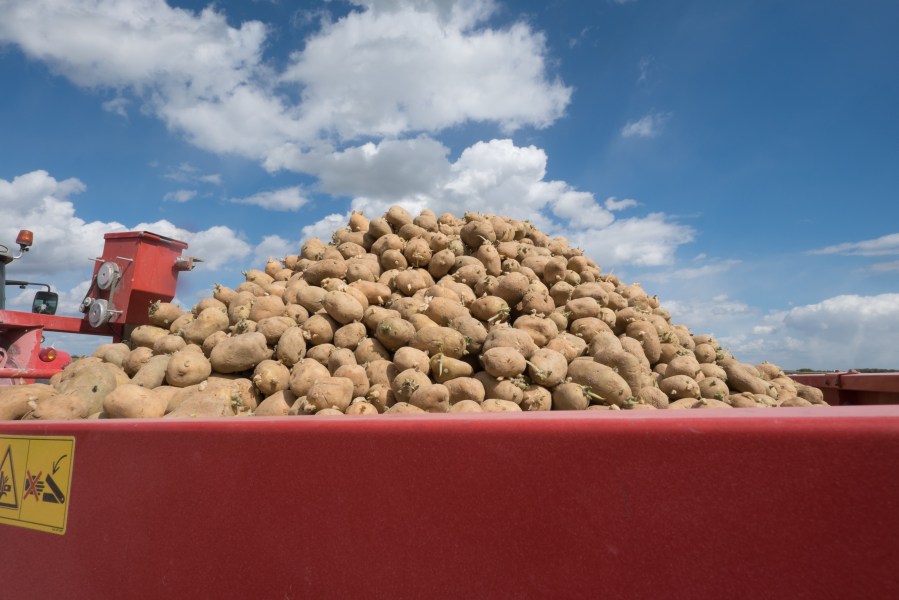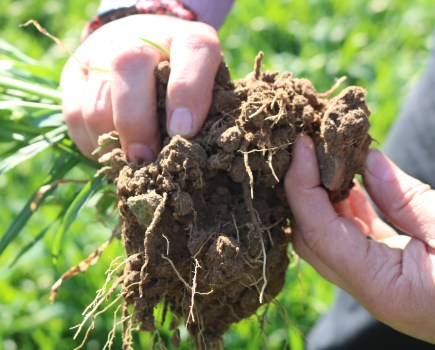No-till potatoes grown under a straw mulch could help farmers to restore degraded arable soils cost-effectively if used as a cash crop within a regenerative cropping rotation, according to trial findings from ProCam. Charlotte Cunningham reports.
Presenting results from a four year trial at the recent Groundswell conservation agriculture event, Richard Harding from Cambs-based firm ProCam told growers that revenue from the potatoes would offset the cost of importing straw, creating a viable route to more sustainable production.
“Our first step was to grow a high biomass cover crop,” he said, “As this is an essential entry into the no-till potatoes. Then, we placed the potato tubers on the surface and created a mulch by unrolling and fluffing up round bale straw at a rate of around 34t/ha.
“Through this method, we achieved a potato crop of 46t/ha of saleable tubers, so about 75% of a normal crop yield but without the high cost of conventional cultivations. Tuber size range was more variable than from a crop grown conventionally, so finding a market for mid-range potatoes will help to maximise the returns, or the system would work well for producing seed potatoes.
“Following potatoes, we’ve strip tilled the ground and established wide-row crops, such as maize or pumpkins, using a drill with row cleaners to overcome the remaining straw residues.”
Proven evidence
From this proof-of-principle study, Richard believes there is enough evidence to now look at commercialisation of the methodology.
“One of the biggest challenges in making our soils more resilient is to build soil organic matter levels in a way that is practical and financially viable,” he added. “If we can do this, we can capture all the inherent benefits this brings in terms of improved moisture retention, better nutrient use efficiency, reduced draft requirement at planting, and lastly the most important benefit of improving the biological activity of the soil.
“We’ve shown what’s possible on a small scale, so now we need to apply some existing technologies, such as those used in the mechanised horticultural sector, to demonstrate what’s possible commercially.”




